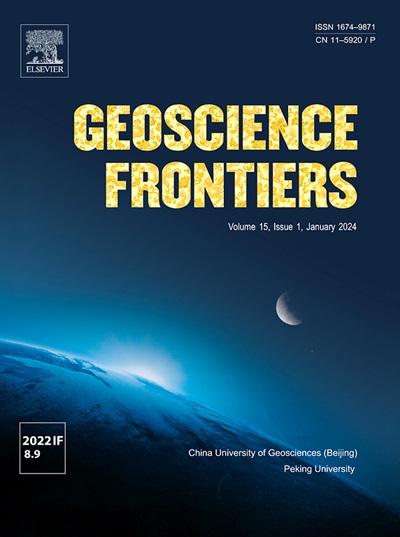A novel flood conditioning factor based on topography for flood susceptibility modeling
IF 8.5
1区 地球科学
Q1 GEOSCIENCES, MULTIDISCIPLINARY
引用次数: 0
Abstract
Flood is one of the most devastating natural hazards. Employing machine learning models to construct flood susceptibility maps has become a pivotal step for decision-makers in disaster prevention and management. Existing flood conditioning factors inadequately account for regional characteristics of flood in the depiction of topography, potentially leading to an overestimation of flood susceptibility in flat areas. Addressing this gap, this study proposes a novel flood conditioning factor, local convexity factor (LCF), to enhance the accuracy of flood susceptibility modeling. Initially, LCF is computed based on a standard normal Gaussian surface to highlight elevation variations in local terrain. Subsequently, LCF is applied to flood susceptibility modeling using seven machine learning models across four distinct basins. Comparative analysis is conducted between flood susceptibility maps with and without the application of LCF to evaluate its impact on flood susceptibility modeling. The results demonstrate that the proposed LCF can enhance the accuracy of flood susceptibility modeling to varying degrees, across the four basins investigated. The Fujiang basin exhibited the most substantial improvement, with its AUC improved from 0.861 to 0.886, Producer’s Agreement improved from 0.869 to 0.899, and Overall Agreement improved from 0.778 to 0.811. Comparation with hydrodynamic inundation maps shows that particularly in relatively flat terrain areas, flood susceptibility maps incorporating LCF offer more precise delineation between flood-prone and non-flood-prone zones. This research holds potential for widespread application in the prediction of flood susceptibility using machine learning models, providing a novel perspective for enhancing their accuracy.

基于地形的洪水调节因子在洪水敏感性模拟中的应用
洪水是最具破坏性的自然灾害之一。利用机器学习模型构建洪水易感度图已成为灾害预防和管理决策者的关键一步。现有的洪水调节因子在描述地形时没有充分考虑洪水的区域特征,可能导致对平坦地区洪水易感性的高估。针对这一不足,本研究提出了一种新的洪水调节因子——局部凸度因子(LCF),以提高洪水敏感性模型的准确性。最初,LCF是基于标准正态高斯曲面计算的,以突出局部地形的高程变化。随后,LCF应用于4个不同流域的7个机器学习模型的洪水敏感性建模。对比分析了应用LCF和未应用LCF的洪水易感性图,评价了其对洪水易感性建模的影响。结果表明,LCF在不同程度上提高了4个流域洪水敏感性模型的精度。富江盆地改善最为明显,AUC由0.861提高到0.886,生产者协议由0.869提高到0.899,总体协议由0.778提高到0.811。与水动力淹没图的比较表明,特别是在相对平坦的地形地区,纳入LCF的洪水易发性图可以更精确地描绘洪水易发区和非洪水易发区。该研究在利用机器学习模型预测洪水易感性方面具有广泛的应用潜力,为提高机器学习模型的准确性提供了一个新的视角。
本文章由计算机程序翻译,如有差异,请以英文原文为准。
求助全文
约1分钟内获得全文
求助全文
来源期刊

Geoscience frontiers
Earth and Planetary Sciences-General Earth and Planetary Sciences
CiteScore
17.80
自引率
3.40%
发文量
147
审稿时长
35 days
期刊介绍:
Geoscience Frontiers (GSF) is the Journal of China University of Geosciences (Beijing) and Peking University. It publishes peer-reviewed research articles and reviews in interdisciplinary fields of Earth and Planetary Sciences. GSF covers various research areas including petrology and geochemistry, lithospheric architecture and mantle dynamics, global tectonics, economic geology and fuel exploration, geophysics, stratigraphy and paleontology, environmental and engineering geology, astrogeology, and the nexus of resources-energy-emissions-climate under Sustainable Development Goals. The journal aims to bridge innovative, provocative, and challenging concepts and models in these fields, providing insights on correlations and evolution.
 求助内容:
求助内容: 应助结果提醒方式:
应助结果提醒方式:


